The Brown Family Library was donated to the American Antiquarian Society in 2019 by Dr. John Goldsberry, Jr., and his wife Dr. Dorista Goldsberry, along with their family. The family’s library joins other part of the Brown Family Collections already at AAS, donated by earlier generations of the family starting in the 1970s. Together the collections consist of family papers, portraits, photographs, and over one hundred 19th-century books. The materials center around William and Martha Ann Brown and their descendants, a prominent Black family living in Worcester, Massachusetts, in the mid-1800s.
Recently, a conservation survey was conducted to assess the overall condition of each of the 19th-century books. From this survey, books were pulled to be placed in custom housing for preventive conservation, or for treatment to help improve the longevity and stability of these historic materials. Below is a snapshot of the spreadsheet created to record the condition and treatment or rehousing measures taken for each Brown family book.
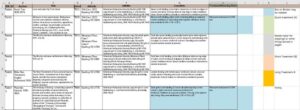
Some of the main treatments included minor repair of the original cloth bindings using wheat starch paste or animal glue and toned Japanese papers, as well as reattaching loose spines and cover boards (figs. 2-7). Here is one example where the back cover board and spine were detached from the text block (figs. 2 and 3).
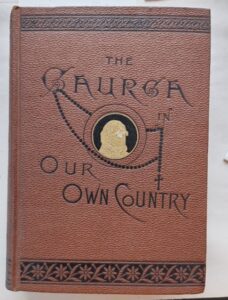
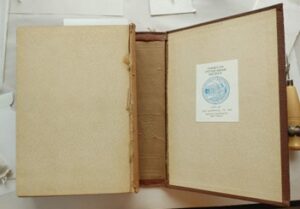
Due to the size and weight of the book, a piece of cotton was adhered to the spine with some excess to the side where the board was detached (fig. 4). The cotton was further secured with thread that was sewn through the first three signatures (fig. 5).
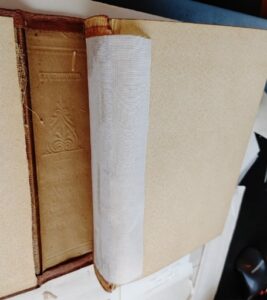
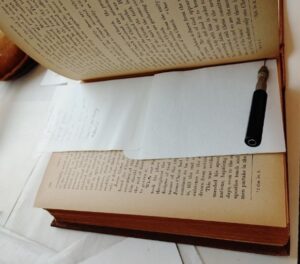
A “tube” made from strong paper was adhered using animal glue over the cotton and thread, then adhered to the loose spine (fig. 6). The endpaper on the back board was carefully lifted and the excess cotton piece was inserted under the paper, thus reattaching the board. Finally, a piece of toned Japanese paper was adhered over the interior joint to secure and hide the slightly exposed back cover board (fig. 7).
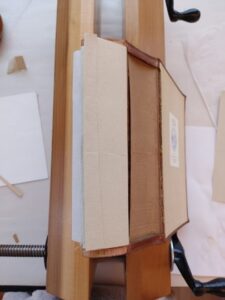

In addition to these more extensive treatments, like the one seen above, some more minor treatments were performed on the Brown family books. These minor treatments included pasting down pieces of spines that were lifting; adding guard tissue to lose pages with wheat starch paste and toned Japanese paper; and adding partial tubes to the spine to ensure that the spine stayed attached to the book cloth and boards during repeated opening and closing of the volume.
Another issue addressed during the conservation survey was how to safely house the many newspaper clippings, bookmarks, and pressed botanicals that were found between the pages of several Brown family books. These added objects show how the book was used by Brown family members, which is of great importance not only for the curators, but for future researchers. However, these materials are not always compatible with the paper of the book and can cause staining through acid migration (fig. 8).
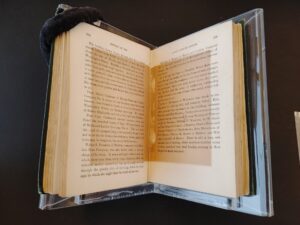
A discussion was had on how to best preserve the physical properties of the book while also respecting and preserving the history of its use. After much debate, conservation staff and the curator of books decided to house pressed materials into polypropylene sleeves with a note stating on which page the materials were found so that this information is not lost for future researchers (fig. 9).
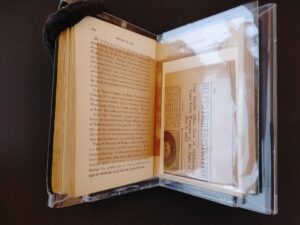
Due to the fragile nature of some of the clippings, an inner folder of translucent paper was added for safe removal of the clippings from the sleeves (figs. 10). These smooth, translucent, acid-free papers are often used to make folders because they allow for a preview of the object without opening the folder.
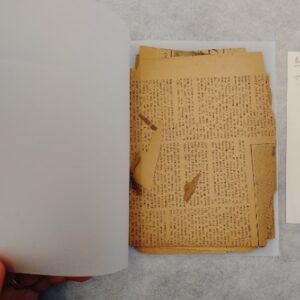
These sleeves are then placed with the book in which they were found in a conservation binder (fig. 11) or a custom-made clamshell box (fig. 12).
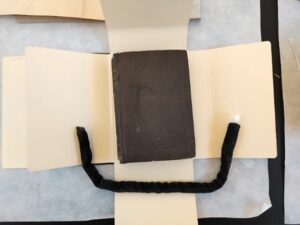
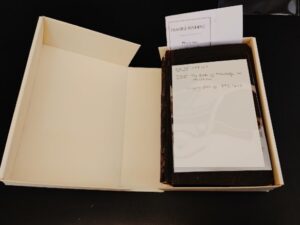
After the collection survey, treatment, and rehousing of several books, the Brown Family Collections are in more stable condition and ready to be used for research! The goal of the survey and treatments was not to make the books look new or alter original material, but rather enhance their stability so that they can be safely accessed by current and future researchers.
Below is a snapshot of Brown family books that were treated and rehoused, and then placed safely back in the stacks (fig. 13).
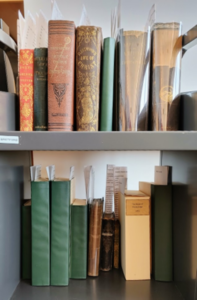
Want to know more about the Brown Family Collections at AAS? Check out these links below to other blog posts and public programs!
https://pastispresent.org/2021/good-sources/martha-ann-brown-community-leader/
https://pastispresent.org/2022/news/poetry-and-portraits-of-the-past-and-present/
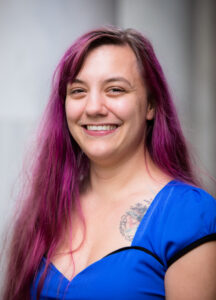 Marissa Maynard is the library and archives conservator. Marissa helps to ensure that collections are not only preserved but also usable by researchers, working closely with library staff to prioritize and assess conservation needs. Prior to joining AAS, Marissa worked at the Cleveland Museum of Art as an Andrew W. Mellon Fellow in photograph conservation. Marissa has also worked in the conservation lab of libraries including the Indiana State Library and Syracuse University Special Collections. Marissa has a Master of Art Conservation (MAC) degree, specializing in paper and photograph conservation from Queen’s University. She also holds an MA in art history from Syracuse University and a BA in chemical microscopy from North Central College.
Marissa Maynard is the library and archives conservator. Marissa helps to ensure that collections are not only preserved but also usable by researchers, working closely with library staff to prioritize and assess conservation needs. Prior to joining AAS, Marissa worked at the Cleveland Museum of Art as an Andrew W. Mellon Fellow in photograph conservation. Marissa has also worked in the conservation lab of libraries including the Indiana State Library and Syracuse University Special Collections. Marissa has a Master of Art Conservation (MAC) degree, specializing in paper and photograph conservation from Queen’s University. She also holds an MA in art history from Syracuse University and a BA in chemical microscopy from North Central College.
